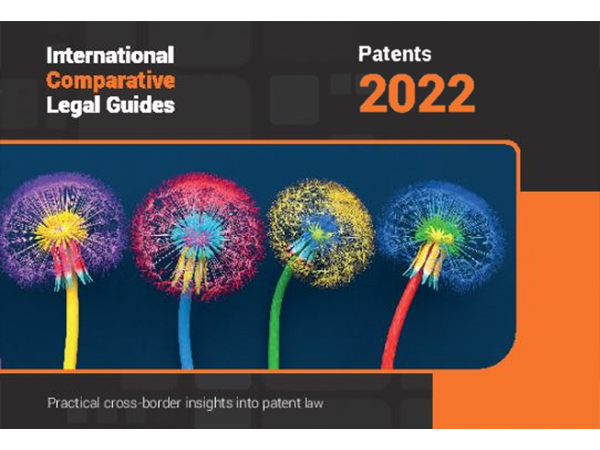
Intellectual Property
Viewpoints
Filter by:
Four Reasons to File an RCE with a Request to Suspend Processing
March 29, 2016 | Blog | By Christina Sperry
The U.S. Patent and Trademark Office (USPTO) allows a Request for Continued Examination (RCE) to be filed with a request to suspend processing of the RCE for up to 3 months, in accordance with 37 CFR 1.103(c).
Read more
Supreme Court Decides to Hear Samsung v. Apple, Appears Ready to Weigh-In on Patent Damage Calculations
March 28, 2016 | Blog
This week, in Samsung Electronics Co. v. Apple Inc., No. 15-777, the Supreme Court granted Samsung’s petition for certiorari and agreed to hear the case about Apple’s smartphone design patents in its upcoming term.
Read more
Federal Circuit Finds Personal Jurisdiction over Mylan in Two Hatch-Waxman Appeals
March 24, 2016 | Blog | By Adam Samansky, Joe Rutkowski
On Friday, March 18, the Court of Appeals for the Federal Circuit affirmed two District of Delaware rulings that non-resident defendant generic ANDA filer, Mylan, is subject to personal jurisdiction in two Hatch-Waxman suits filed in the state.
Read more
Maintaining a Wall Around U.S. Intellectual Property: Federal Circuit says Disputes over U.S. Patents, Trademarks and Copyrights should be Decided by U.S. Courts
March 23, 2016 | Blog | By Brad M Scheller
The Federal Circuit rejected an attempt by accused infringers of U.S. intellectual property rights to have claims litigated in a foreign country in Halo Creative & Design Ltd. v. Comptoir Des Indes, Inc., No. 15-1375 (Fed. Cir. Mar. 14, 2016).
Read more
What is Intellectual Property, and Why is it Important?
March 23, 2016 | Article | By Peter Snell
IP 101: This deck gives entrepreneurs the “need-to-know” information about trademarks, copyrights, patents and trade secrets.
Read more
Preparing Your Portfolio For Prime Time: IP Due Diligence
March 23, 2016 | Article | By William Geary
Due diligence helps potential investors know they are making a winning bet on your start-up. Hence, investors conduct a detailed look “under the hood” of the company and the company’s IP is at center stage.
Read more
PTAB Cannot Rely on Key Factual Assertions First Made at Oral Argument—Patent Owners are Entitled to Notice of and a Fair Opportunity to Meet All Grounds
March 18, 2016 | Blog | By Brad M Scheller
This week the Federal Circuit handed a positive development to Patent Owners working to keep their patent rights before the Patent Trial and Appeal Board.
Read more
Could the Eastern District of Texas’s Reign Come to an End?
March 17, 2016 | Blog | By Brad M Scheller , Robert Moore, Serge Subach
It has become a patent litigation trope, discussed at every Silicon Valley water cooler, that patent litigation is broken because all patent cases are tried in the plaintiff-friendly Eastern District of Texas. While this reputation is arguably undeserved, the Eastern District of Texas does end up with the majority of patent cases.
Read more
What are the USPTO’s Patent Plans for Fiscal Year 2017?
March 14, 2016 | Blog | By Christina Sperry
The U.S. Patent and Trademark Office (USPTO) explains several patent prosecution trends, goals, and programs to justify proposed spending of its collected fees in its recently-issued Fiscal Year 2017 Congressional Justification report.
Read more
BPCIA Patent Litigation Webinar Recap
March 11, 2016 | Blog | By Thomas Wintner, Joe Rutkowski, Matthew Show
Our Biosimilar webinar series continued this month with Tom Wintner’s BPCIA Patent Litigation presentation. Tom discussed the general framework of litigation under the Biologics Price Competition and Innovation Act (“BPCIA”), including the “patent dance” information exchange under 42 U.S.C. §262(l), and three case studies that inform our current understanding of emerging judicial interpretation of BPCIA requirements.
Read more
The Federal Circuit Newly Recognizes Patent-Agent Privilege
March 11, 2016 | Blog | By Christina Sperry
On March 7, 2016, the Court of Appeals for the Federal Circuit recognized “a patent-agent privilege extending to communications with non-attorney patent agents when those agents are acting within the agent’s authorized practice of law before the Patent Office.”
Read more
USPTO Data Supports Notion That Filing A Patent Owner Preliminary Response May Raise the Likelihood of Denial of an IPR or CBM Petition
March 10, 2016 | Blog | By William Meunier , Nick Armington
Following the filing of a petition with the Patent Trial and Appeal Board (PTAB) seeking to initiate either an Inter Partes Review (IPR) or Covered Business Method (CBM) Review, the patent owner may file a preliminary response addressing the arguments in the petition and also potentially raising arguments regarding statutory bars that may prevent the IPR or CBM proceeding from being initiated.
Read more
In Daubert Ruling Excluding Both Parties’ Damages Experts, Judge Andrews Rejects FRAND Portfolio Rate as Ceiling on Reasonable Royalty, and Finds Use of Surveys Not Properly Tied to Relevant Technology
March 3, 2016 | Blog | By Robert Moore
On February 25, 2016, Judge Richard Andrews granted the parties’ cross-motions to exclude both sides’ damages experts in M2M Solutions LLC v. Motorola Solutions, Inc., C.A. No. 12-33-RG.
Read more
Kyle Bass’ Another Three IPRs: Targeting Anacor
March 2, 2016 | Blog | By Christina Sperry
Kyle Bass continues to make waves throughout the pharmaceutical industry. Since Bass founded Coalition for Affordable Drugs X LLC (“CFAD”) to challenge pharmaceutical patents, CFAD has filed over three dozen petitions as of this date with the Patent Trial and Appeal Board ( “PTAB”) of the U.S. Patent and Trademark Office ( “Office”) seeking to institute inter partes review (“IPR”) proceedings to invalidate a number of pharmaceutical patents.
Read more
Design Patents – Unlocking the Value of The User Experience
March 1, 2016 | Blog
The oft-overlooked design patent has seen somewhat of a revival recently (at least in the media) ever since a jury in California awarded Apple $399 million in damages — i.e., all Samsung profits from the sale of several of its smartphone and tablet devices — for Samsung’s infringement of three Apple design patents in Apple, Inc., v. Samsung Electronics Co., Ltd.
Read more
William B. Kezer Joins Mintz's IP Practice
February 29, 2016 | Blog | By Michael Renaud, Matthew Hurley
We are excited to announce the arrival of Bill Kezer, PhD, the newest Member in our Intellectual Property Practice. Bill joins our team in San Francisco, where he deepens our bench in the chemical and pharmaceutical spaces.
Read more
Federal Circuit Backs Finding of Inequitable Conduct in Reexamination of Prosthetics Patent
February 25, 2016 | Blog | By Brad M Scheller
The Federal Circuit has affirmed a district court’s awarding of attorneys’ fees to Alps South (Alps) based on inequitable conduct by Ohio Willow Wood (OWW) during reexamination of its patent for gel-coated, cushioned socks that fit over an amputated limb (U.S. Patent No. 5,830,237).
Read more
USPTO “Forecloses” on Mortgage Processing Patent under Alice
February 25, 2016 | Blog | By Brad M Scheller
Patent owners continue to face an uphill battle at the Patent Trial and Appeal Board. According to U.S. Patent Office statistics as of December 31, 2015, a majority (72%) of the 529 Inter Partes Reviews (IPR) proceeding to trial and receiving Final Written Decisions ended in all examined claims being invalidated.
Read more
Federal Circuit Declines to Disturb Established Precedent Regarding the Exhaustion of Patent Rights
February 16, 2016 | Blog | By Andrew DeVoogd
On February 12, 2016, the Federal Circuit Court of Appeals issued a decision confirming two important aspects of the doctrine of patent exhaustion in the anticipated en banc decision in Lexmark Int’l, Inc. v. Impression Prods., Inc., Nos. 14-1617, -1619 (slip op.) (Fed. Cir. Feb. 12, 2016) (“Lexmark”).
Read more
First Monoclonal Antibody Biosimilar in U.S. Gets One Step Closer to FDA Approval
February 10, 2016 | Blog | By Thomas Wintner, Joanne Hawana
Yesterday, the FDA's Arthritis Advisory Committee voted 21-3 to recommend that CT-P13, Celltrion's proposed biosimilar of Janssen Biotech, Inc.'s Remicade® (infliximab) be approved for all indications -- including, among others, Crohn's disease, ulcerative colitis, rheumatoid arthritis (RA), and ankylosing spondylitis (AS).
Read more
Explore Other Viewpoints:
- Data Centers & Digital Infrastructure
- AI: The Washington Report
- Antitrust and Federal Regulation
- Appellate
- Arbitration, Mediation & Alternate Dispute Resolution
- Artificial Intelligence
- Awards
- Bankruptcy & Restructuring
- California Land Use
- Cannabis
- Class Action
- Complex Commercial Litigation
- Construction
- Consumer Product Safety
- Corporate Governance (ESG)
- Cross-Border Asset Recovery
- DEI Legal Developments
- Debt Financing
- Direct Investing (M&A)
- Diversity
- EB-5 Financing
- Education & Nonprofits
- Employment
- EnforceMintz
- Environmental (ESG)
- Environmental Enforcement Defense
- Environmental Law
- Environmental, Social, and Corporate Governance (ESG)
- FDA Regulatory
- False Claims Act
- Federal Circuit Appeals
- Financial Institution Litigation
- Government Law
- Growth Equity
- Health Care
- Health Care Compliance, Fraud and Abuse, & Regulatory Counseling
- Health Care Enforcement & Investigations
- Health Care Transactions
- Health Information Privacy & Security
- IP Due Diligence
- IPRs & Other Post Grant Proceedings
- Immigration
- Impacts of a New US Administration
- Insolvency & Creditor Rights Litigation
- Institutional Investor Class Action Recovery
- Insurance & Financial Services
- Insurance Consulting & Risk Management
- Insurance and Reinsurance Problem-Solving & Dispute Resolution
- Intellectual Property
- Investment Funds
- Israel
- Licensing & Technology Transactions
- Life Sciences
- Litigation & Investigations
- M&A Litigation
- ML Strategies
- Managed Care
- Medicare, Medicaid and Commercial Coverage & Reimbursement
- Mergers & Acquisitions
- Patent Litigation
- Patent Prosecution & Strategic Counseling
- Pharmacy Benefits and PBM Contracting
- Portfolio Companies
- Privacy & Cybersecurity
- Private Client
- Private Equity
- Pro Bono
- Probate & Fiduciary Litigation
- Products Liability & Complex Tort
- Projects & Infrastructure
- Public Finance
- Real Estate Litigation
- Real Estate Transactions
- Real Estate, Construction & Infrastructure
- Retail & Consumer Products
- Securities & Capital Markets
- Securities Litigation
- Social (ESG)
- Special Purpose Acquisition Company (SPACs)
- Sports & Entertainment
- State Attorneys General
- Strategic IP Monetization & Licensing
- Sustainable Energy & Infrastructure
- Tax
- Technology
- Technology, Communications & Media
- Technology, Communications & Media Litigation
- Trade Secrets
- Trademark & Copyright
- Trademark Litigation
- Unified Patent Court (UPC)
- Value-Based Care
- Venture Capital & Emerging Companies
- White Collar Defense & Government Investigations
- Women's Health and Technology




